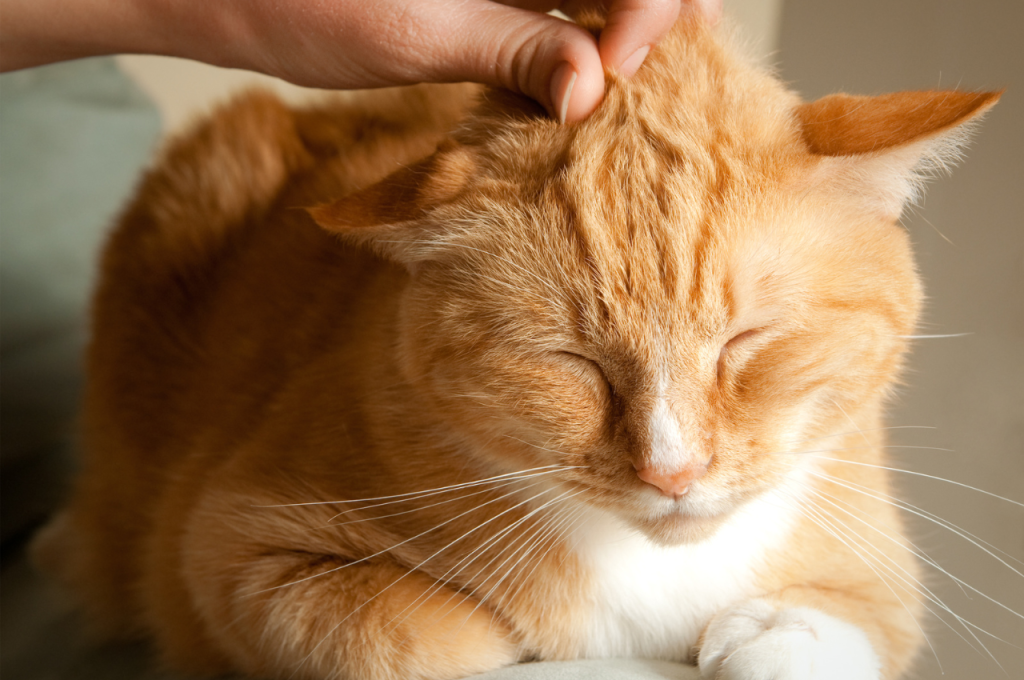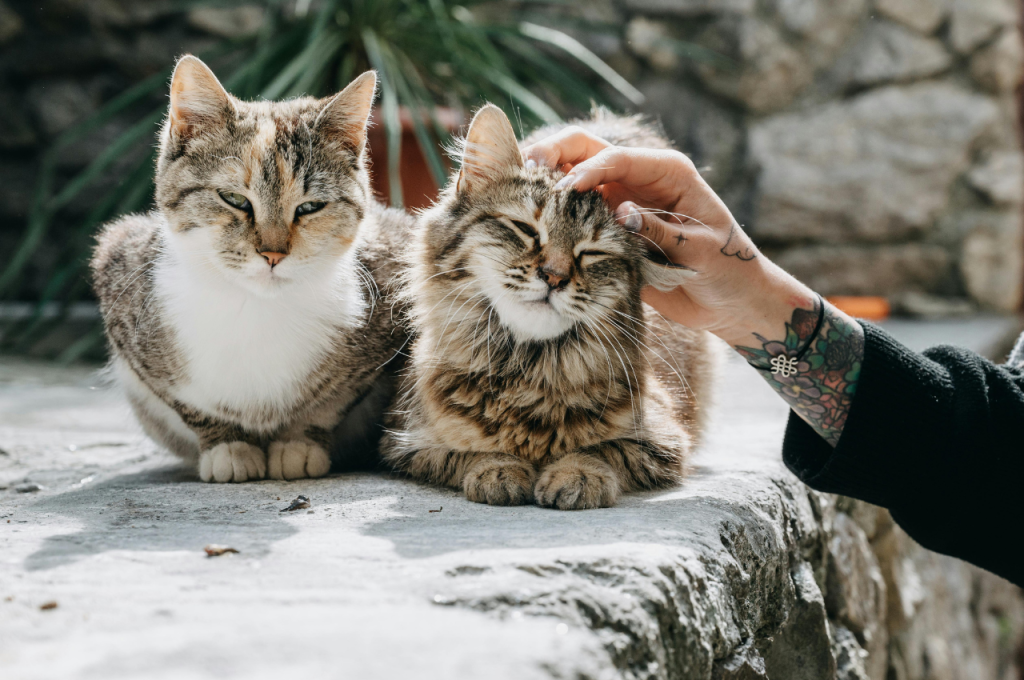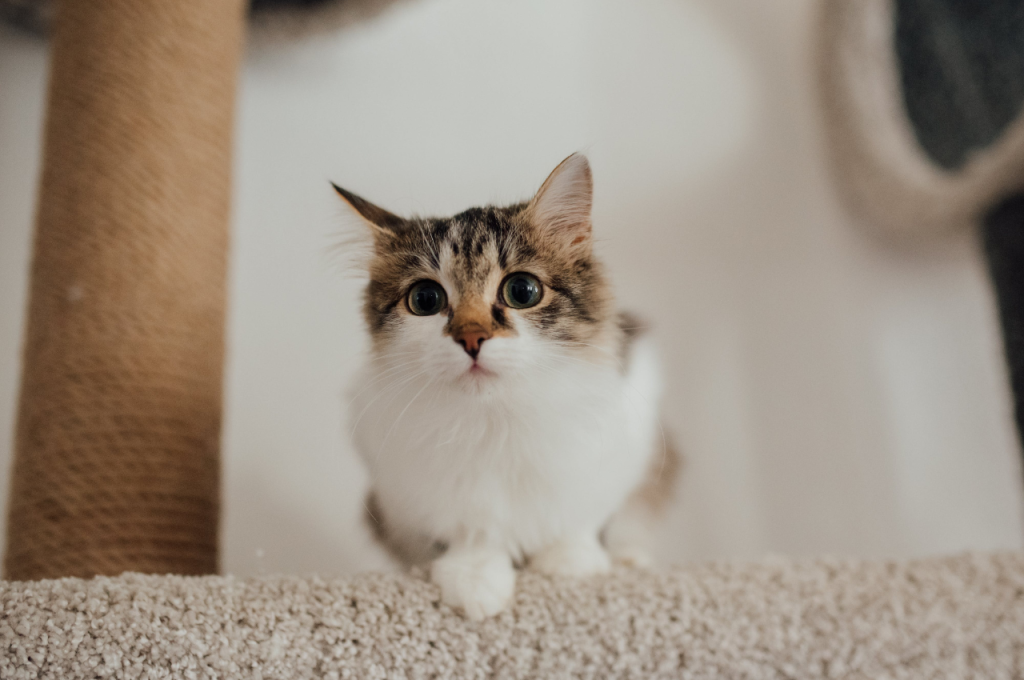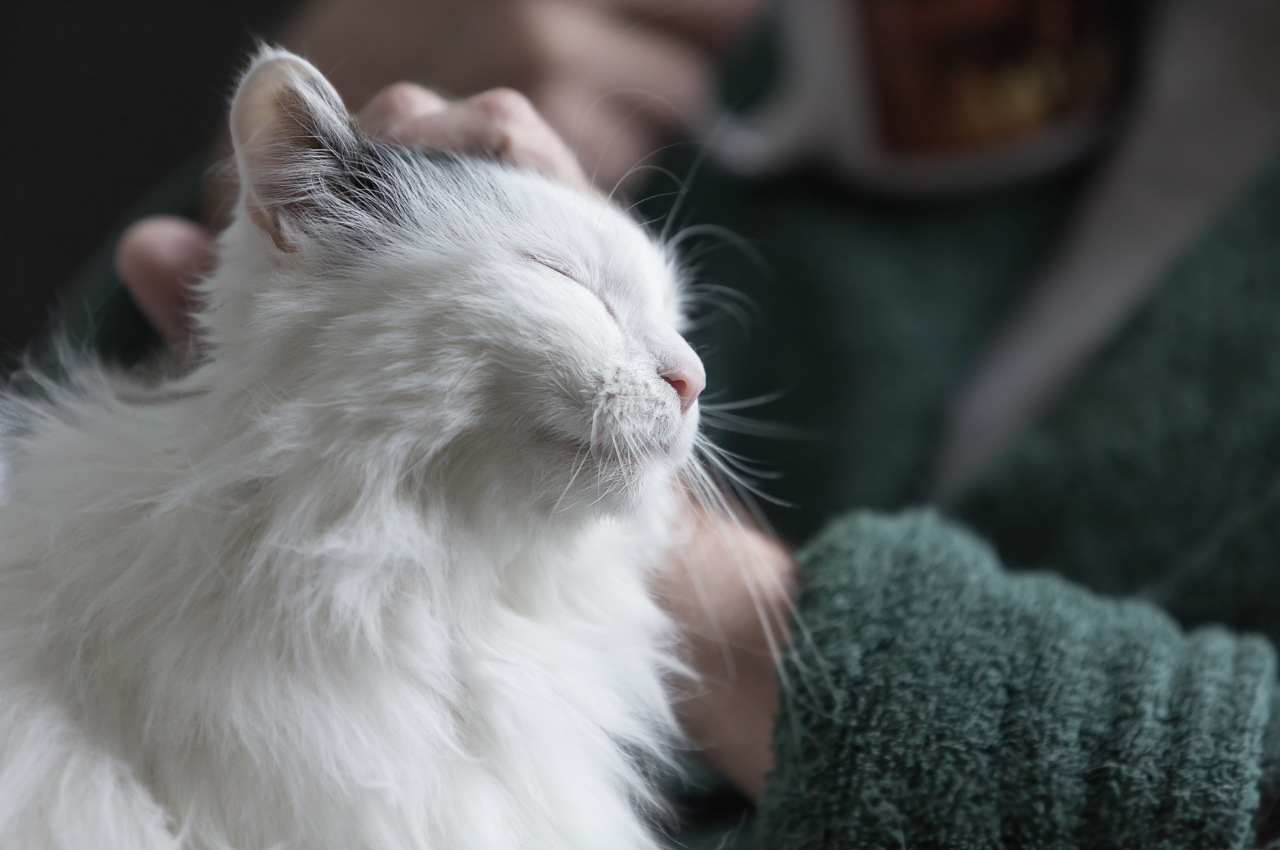If your cat is happy, it will exhibit signs like purring, relaxed body language, and playful behavior. Understanding your cat’s cues is essential in ensuring their well-being and happiness.
Cats communicate through their body language, vocalizations, and interactions, offering insights into their emotional state. Observing your cat’s behavior and bonding with them allows you to nurture a strong and positive relationship. When you provide a safe and enriching environment, your feline companion is more likely to exhibit content and joyful behaviors.
By recognizing the signs of happiness in your cat, you can deepen your bond and create a harmonious living arrangement for both you and your beloved pet.
Purring
One of the most well-known signs of a happy cat is purring. When your cat purrs, it’s a sure sign of contentment and happiness. The gentle rumbling sound they produce indicates they are feeling relaxed and comfortable.

Kneading
Cats knead when they are happy, a behavior that dates back to kittenhood when they kneaded their mother’s belly for milk. It’s a sign of utmost comfort. As they grow older, cats continue to knead as a comforting and soothing behavior.
Slow Blinking
Slow blinking is a way for cats to show trust and affection. When your cat gives you a slow blink, it means they feel safe and happy in your presence. A slow blink can strengthen the bond between cats and their owners, fostering mutual trust and understanding.
Playfulness
Playfulness is a key indicator of your cat’s happiness and well-being. Cats express their happiness through various playful behaviors that show their joyful and content state of mind.
Chasing Toys
- Cats chasing toys with enthusiasm.
- Fast movements and focused attention.
- Playful pouncing and swatting behavior.
Engaging With You
- Seeking interactive play sessions.
- Meowing for attention and playtime.
- Cuddling and purring during play.
Appetite
A cat’s appetite can reveal a wealth of information about their overall health and well-being. As responsible pet owners, it’s essential to pay attention to your cat’s eating habits and understand what they may signify.
Healthy Eating Habits
One of the indicators that your cat is happy is through their healthy eating habits. A content and satisfied cat will typically have a consistent appetite, enjoying their meals without any signs of being overly finicky or picky. If your cat is eager to eat their food, finishing their meals without leaving much behind, it is a good sign that they are content in their environment.
Enjoyment of Treats
Another way to gauge your cat’s happiness is by observing their enjoyment of treats. Treats are often seen as special rewards, and when your cat happily indulges in them, it’s a positive indication that they are feeling content and satisfied. Additionally, a happy cat in good health will exhibit moderation when it comes to treats, not consuming them excessively or displaying signs of overindulgence.
Socialization
From your cat’s playful behavior and purring to their relaxed body language and interactive demeanor, these are all signs indicating a happy and socialized pet. When your feline companion seeks out your company, engages in play, and shows affection, rest assured that they are content and enjoying their environment.

Following cues of your cat’s socialization is a key indicator of their happiness. Seeking affection and being comfortable around others are prominent signs that your feline companion is content and emotionally fulfilled.
Seeking Affection
When your cat seeks attention and cuddles, it signifies their joy and satisfaction. Purring while being petted or rubbing against your legs are clear indications of their desire for affection and companionship.
Comfortable Around Others
Observing your cat’s behavior around visitors or other animals can indicate their happiness. If your cat is relaxed and calm, enjoying the company of others, this suggests that they are comfortable and content in their social interactions. Understanding these subtle but meaningful signals can help you ensure that your feline friend is living a fulfilling and joyful life.
Grooming
One sure sign that your cat is content is the regularity of their self-grooming. Cats are meticulous creatures and spend a substantial amount of their waking hours grooming themselves, ensuring their fur is clean and glossy. A happy cat will keep up with their grooming routine, showcasing their sense of well-being and self-satisfaction.
Another indication of a happy cat is when they allow you to groom them. If your feline friend is relaxed and comfortable when you help them by brushing their coat or trimming their nails, it’s a clear signal that they are happy and trust you. This act of acceptance reinforces the bond between you and your cat, fostering a harmonious and blissful relationship.
Relaxed Body Language
One way to determine if your furry friend is happy is by observing their body language. Cats express their emotions through various non-verbal cues, and a relaxed posture is a clear indication of contentment.
Relaxed Posture
When your cat is feeling happy, you’ll notice that their body appears calm and at ease. They’ll have a loose posture, with their muscles relaxed and their body positioned naturally. You may see your cat lying on their side or stretched out comfortably, which are signs that they feel secure and content.
Slow, Rhythmic Tail Movements
Another key aspect of a cat’s relaxed body language is their tail movements. When a cat is happy, their tail tends to move in a slow, rhythmic manner. It may swish from side to side gently or curl and uncurl smoothly. This gentle tail action signifies that your feline friend is content and at ease in their environment.
If you notice these signs of relaxation, it’s a good indicator that your cat is happy and comfortable. Remember, every cat is unique, so it’s essential to observe their behaviors to understand their specific expressions of happiness.
Contented Vocalizations
If your cat indulges in contented vocalizations such as purring, chirping, and soft trills, it’s a clear sign they are happy. Additionally, a relaxed posture, blinking slowly, and showing affectionate behavior all indicate a content and happy cat.
Contented vocalizations Cats communicate their happiness through various vocal sounds.
Chirping
Chirping is a joyful sound cats make when they’re happy, such as birds outside the window or toys they want to play with. It’s a playful vocalization that cats use to express their curiosity and enthusiasm. Chirping often accompanies hunting behavior, as cats mimic the sounds of their prey.
Trilling
Trilling is a melodic sound that signifies contentment in cats. Contented cats often engage in chirping or trilling to express their happiness. These vocalizations indicate a sense of calm and satisfaction in your feline friend. When your cat chirps or trills, it’s a clear sign that they are feeling content and at ease. It’s a delightful sound that reassures you that your cat is in a state of bliss.
Healthy Physical Appearance
Having a cat with a healthy physical appearance is often a clear indicator that they are happy and well-cared for. A cat’s physical condition reflects their overall wellness and can give us insight into their contentment.
Bright Eyes
Bright, clear eyes are a key sign of a happy cat, showing they are alert and engaged with their surroundings. Dull or cloudy eyes might indicate health issues or unhappiness.

Shiny Coat
A shiny coat is a telltale sign that your cat is in good health and content. A glossy coat free of mats or dullness can demonstrate that your feline friend is well-fed, groomed, and thriving.
Conclusion
Understanding the signs of a happy cat is crucial for their overall well-being. By observing their body language, vocalization, and behavior, you can determine if your feline friend is content and satisfied. Remember to provide a stimulating and comfortable environment, offer plenty of affection and playtime, and meet their basic needs.
By doing so, you will ensure a happy and harmonious companionship with your beloved cat.
